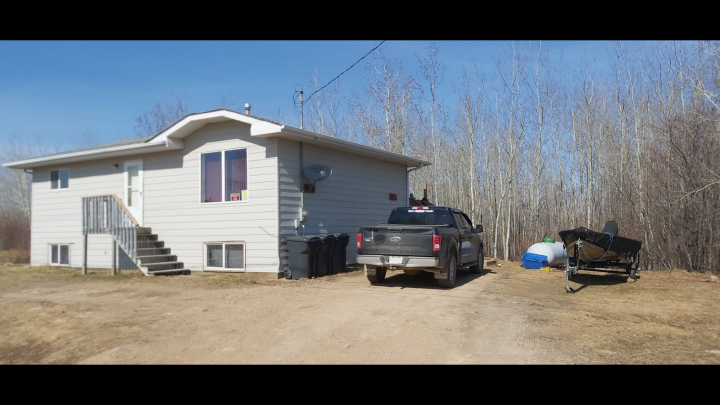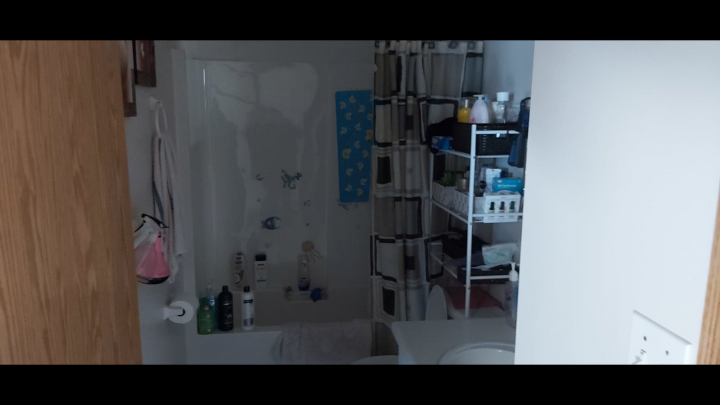The family watched uneasily as health-care workers in hazmat suits entered their home on their reserve in northern Saskatchewan.

“A lot of the kids didn’t know what was going on,” said patriarch Darin Poorman. “But they all got tested.”
It was April 15, two days after a Saskatchewan Health Authority nurse called to inform them they’d been in contact with someone infected with the novel coronavirus.
“It was like: What? Who? How?” said Poorman’s wife, Wanda Wolverine Poorman.
“Everything went through my mind, wondering. It was a shock.”
Poorman and Wolverine Poorman live in her home community of English River First Nation with two of their children and three of their grandchildren. Three of their other children and their other children’s families were staying with them.
In total, there were 15 people in the home.
Knowing the risks associated with COVID-19, Poorman said they wore masks while grocery shopping. They washed their hands. He said they more or less stayed home, and when they didn’t, they kept their distance.
On April 11, a relative from La Loche — which has become the epicentre of the northern Saskatchewan COVID-19 outbreak, but there was no way the family could have known that at the time — dropped by for a brief visit.
“That was our mistake,” Poorman said. “The kind of people we are, we don’t turn people away. This is how we are in the north.”
The relative, they found out on April 13, was infected, but had no symptoms.
Wolverine Poorman, her daughters, her son-in-law and one of her young grandchildren all contracted the virus, the health authority confirmed on April 17.
“Just to hear the news you have COVID, tested positive — it takes a big toll on a person,” Wolverine Poorman said.
The family has a bi-level house and Wolverine Poorman and the other three who were sick quarantined in the rooms in the basement, where there’s also a bathroom.
“It’s so unique. It reacts to different people differently,” said Wolverine Poorman, who had the common symptoms of fever and cough.
Her son-in-law and young grandchild only developed fevers, not coughs. Her daughter, who is diabetic, became very ill and on April 23, struggling to breathe, was taken to the hospital in Saskatoon and placed on oxygen.
Upstairs, Poorman and his healthy children and grandchildren, all constantly wearing masks, were dealing with struggles of their own.
“We made sure we kept our distance,” Poorman said. “It’s really important with that many people in the house.
“It’s pretty tough. There are a lot of us, but we understood who couldn’t go downstairs, who couldn’t come upstairs, what had to happen.”
He said they washed up every hour on the hour and “did nothing but clean… wiping down everything with Javex and soap.”
The health authority called multiple times each day and walked the family through temperature, blood pressure and oxygen level checks.
With those who were sick now feeling better, the family wants to share their ongoing story to let others know that even large households can get through an outbreak — and that they don’t have to do it alone.
“We never hid the fact that we did have it,” Poorman said. “We had a lot of support. Every now and then, the community members from English River would drive by honking, telling us we’re not alone. It was very uplifting.”
Wolverine Poorman’s brother, Percy Kenny, was one of the family’s supports. He and his family got groceries for them as they couldn’t leave the house.
“We weren’t going to leave them alone. We weren’t going to let them deal with this COVID-19 on their own,” Kenny said.
“They’d send my son a list. They’d e-transfer money to us and then we’d go to the store, grab the stuff they needed and then my son would drop it off on the step.”
Kenny is a member of the 155 Collective, a growing group of the area’s leaders working to develop the unique and necessary supports to help the rural and remote Indigenous communities in the region through the pandemic.
“We know that it’s here already. Let’s beat it together. Let’s make sure we don’t get any more people infected,” Kenny said.
Like others throughout the province, country and world, they’re grappling with the unknowns of the disease, “the real understanding of how it works, how it hurts people — how we can help them.”
Rick Laliberte, incident commander for the 155 Collective, said right now, the focus is on helping families.
“If you’re proven positive, you will be sent home,” Laliberte said. “And if you’re sent home, your family has to take care of you.
“We’re going completely into home care, preparing for stopping the spread.”
Wolverine Poorman and Poorman said they were lucky to their house allowed for the family members who were infected to segregate themselves.
Other families in rural and remote communities in the far north of Saskatchewan may not have that luxury. The 155 Collective has secured trailers with help from the Métis Nation–Saskatchewan and federal government to help in those situations.
“If it goes unchecked, unisolated, then it will just continue to grow,” Laliberte said.
“It’s a stark reality of what’s happening, so we have to try to manage the virus with that type of strategy and the community plays an important role.”
Questions about COVID-19? Here are some things you need to know:
Health officials caution against all international travel. Returning travellers are legally obligated to self-isolate for 14 days, beginning March 26, in case they develop symptoms and to prevent spreading the virus to others. Some provinces and territories have also implemented additional recommendations or enforcement measures to ensure those returning to the area self-isolate.
Symptoms can include fever, cough and difficulty breathing — very similar to a cold or flu. Some people can develop a more severe illness. People most at risk of this include older adults and people with severe chronic medical conditions like heart, lung or kidney disease. If you develop symptoms, contact public health authorities.
To prevent the virus from spreading, experts recommend frequent handwashing and coughing into your sleeve. They also recommend minimizing contact with others, staying home as much as possible and maintaining a distance of two metres from other people if you go out.
For full COVID-19 coverage from Global News, click here.












Comments